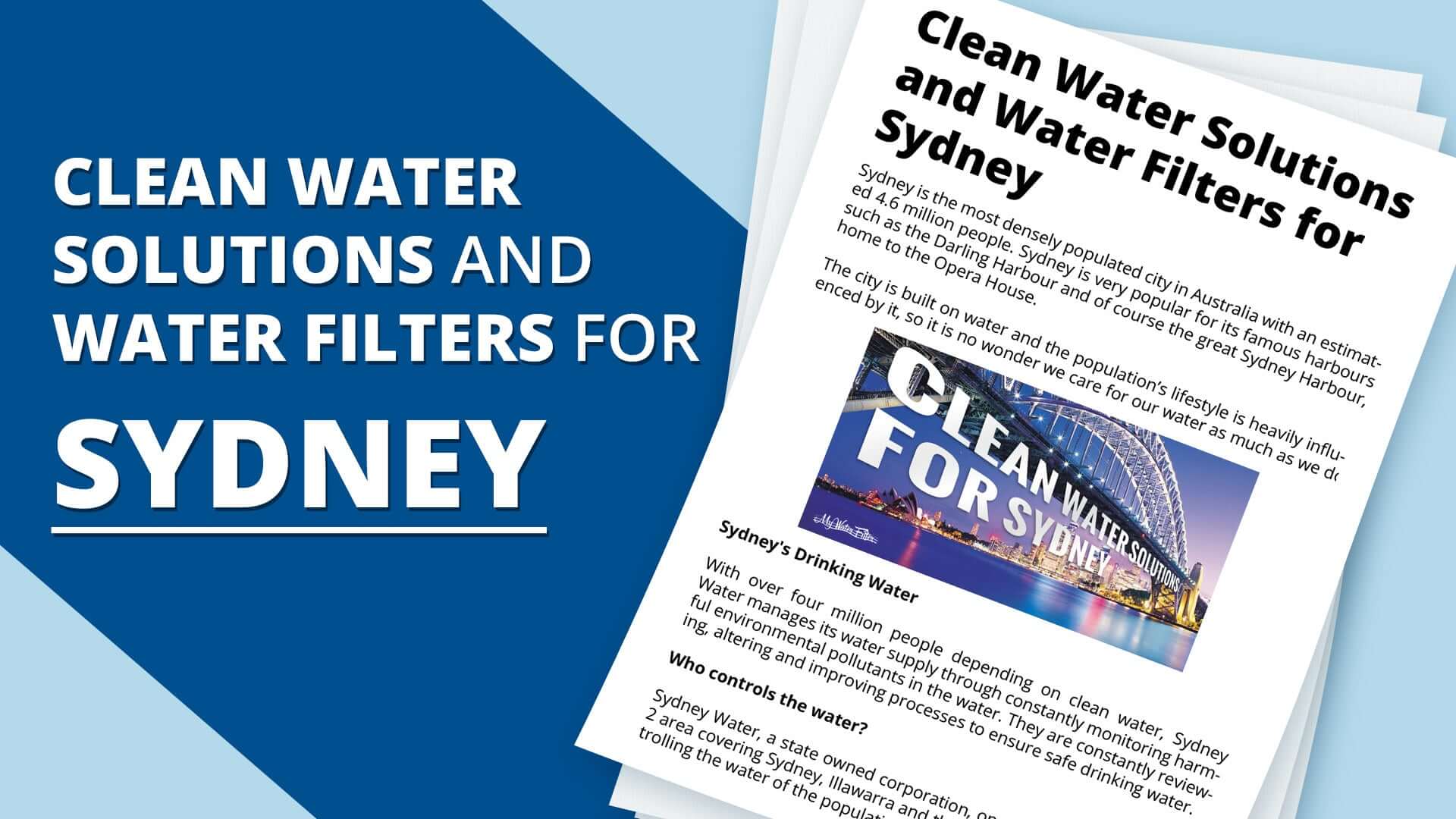Sydney is the most densely populated city in Australia, with an estimated 4.6 million people.
Sydney is very popular for its famous harbours such as the Darling Harbour and, of course, the great Sydney Harbour, home of the Opera House.
The city is built on water, and the population’s lifestyle is heavily influenced by it, so it’s no wonder we care for our water as much as we do.
Sydney's Drinking Water
With over four million people depending on clean water, Sydney Water manages its water supply by constantly monitoring harmful environmental pollutants in the water. They are continuously reviewing, altering and improving processes to ensure safe drinking water.
Who Controls The Water
Sydney Water, a state-owned corporation, operates in the 12,700-km2 area covering Sydney, Illawarra and the Blue Mountain Region, controlling the water of the population.
Did you know that Sydney’s water network spreads over 21,000 km of pipes in 251 reservoirs and 164 pumping stations? 80% of the supply comes from dams, and the rest passes through the filtration system to a Desalination plant, which turns seawater into freshwater.

Diagram taken from http://victoriasdesalinationplant.blogspot.com.au.
What Lurks in Sydney's Tap Water
Sydney Water Treatment
Before it reaches the tap, the water passes through the rigid Sydney Water Treatment Plant, reducing significant amounts of waterborne organisms. The water passes through filtration, and disinfectants are added to make the water clean and safe.
However, even these chemicals contain harmful by-products that may put your health at risk.
Chlorine is the primary disinfectant added to drinking water because it eliminates disease-causing bacteria.
WARNING! Chlorine can react to certain organic matters present in water and become hazardous to one’s health. Increased concentrations may result in certain cancers and digestive disorders.
More: Chlorination, Are You Sure Your Drinking Water is Safe?
Ozone is usually a disinfectant used in the main treatment plants and is used to remove the taste, odour and colour of drinking water.
WARNING! Ozone in itself does not increase health risks in drinking water; its by-products, formaldehyde and acetaldehyde, do. Both can be fatal if you consume large amounts, especially if you have a weak immune system.
Fluoride does not occur naturally in water; it is added to our supplies to help strengthen our teeth.
WARNING! Studies have shown that excessive fluoride in drinking water may trigger dental fluorosis, or just consuming too much of it can lead to the disease.
More: Should You Be Worried About Fluoride In Your Drinking Water?
Copper in small amounts promoted health and can be found in our drinking water.
WARNING! Excess copper can contaminate our drinking water post-treatment in the plant, and if large amounts are consumed, it can cause nausea, headaches, gastric discomfort and at extreme levels liver damage.
More: Health Risk of Copper In Drinking Water.
Is There Something You Can Do?
Now I know after reading this, you may have hesitations about the safety of your drinking water.
Water from your taps isn't hazardous, but it carries risks.
While the treatment processes of public drinking water are out of your control, you can improve what comes out of your tap.
A Simple Solution Is To Get A Water Filter System For Your Household
Water filters rely on simple yet effective technologies to remove contaminants. Although there are several water filters out there, you are sure to find one that suits your needs. Ask professionals regarding what water filters you would need and make sure they are certified.
Browse through the products here at My Water Filter and see a list of water filter technologies routinely tested and passed health safety standards. We are confident we can find one for you and can even deliver it directly to your door, free of charge!
If you’ve got any questions, please feel free to get in touch.








